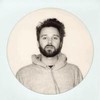Photo by Ahmed Jadallah/VICE News
The Solar Impulse 2 (Si2), a Swiss-made solar-powered aircraft, took off at sunrise from Abu Dhabi, in the United Arab Emirates (UAE), on a historic mission to fly around the world without a drop of fuel.The aircraft, flown by Swiss pilots and innovators André Borschberg and Bertrand Piccard, will make the 22,000-mile trip in 12 legs using nothing but solar energy. The epic round-the-world tour is expected to take five months, with stops in India, China, Hawaii, and other destinations in the United States. The Si2's journey will stream live on YouTube.Related: Africa Could Become the Next Bright Spot for Solar Power ProductionPilot André Borschberg launched the flight at 7:12 AM (local time) on Monday from UAE's Al-Bateen airport headed for Muscat, the capital of Oman. Takeoff was initially scheduled for Saturday, but postponed due to poor weather conditions. The first 250-mile leg of the voyage should take approximately 10 hours — 10 times longer than the same trip on a commercial airliner.The wingspan of the Si2 aircraft is 236 feet — only slightly shorter than the Airbus A380, the world's largest passenger plane. Its wings are equipped with 17,248 solar cells to deliver energy to the aircraft's four electrical motors and to recharge the lithium batteries that will allow the Si2 to fly by night. The plane weighs 5,070 pounds — about the equivalent of an average SUV, and roughly 1 percent of the weight of a jumbo jet. Only one pilot can fit in the cockpit, meaning Borschberg and Piccard will alternate with one another on the trip.Related: There's a Big Energy Story Unfolding and It's Not About Cheap OilEach pilot will be responsible for six segments of the voyage, some of which could last up to five days. There is no standing room in the cockpit, which is comparable in size to a public phone booth. Both pilots have undergone training in yoga and self-hypnosis in preparation for the trip, and have learned to rest in 20-minute periods. They will also wear special goggles to wake them up from their naps with flashing lights."You have to make the cockpit like your own house for a week in the air," Piccard remarked to the Associated Press a few hours before takeoff.Whomever is piloting the plane in a given moment will be in constant communication with a control center in Monaco — the principality's Prince Albert II is a strong supporter of the project — which will relay the details of the epic flight to scientists and the media.The pair said that they want to confront the United Nations conference on climate change scheduled for this December in Paris."Climate change is a fantastic opportunity to bring to the market new green technologies that save energy, save our planet's natural resources, generate profit, create jobs, and sustain growth," Piccard said.The effort is being assisted by a 130-strong team of meteorologists, engineers, and air traffic controllers who will be based in Monaco.After Oman, the Si2 will fly over the Arabian Sea to reach India before heading to China, Hawaii, Phoenix, Dallas, and New York. The penultimate leg of the journey is expected to be the trickiest, as the aircraft undertakes the transatlantic flight between New York and Madrid before returning to Abu Dhabi.Follow Pierre Longeray on Twitter: @PLongeray
Advertisement
Advertisement
This is not the first alternative energy trip for Piccard and Borschberg, who have been testing out their solar-powered designs since 2010. In 2013, the two men flew an earlier version of the aircraft across the US, setting a new world record in solar aviation. Borschberg is CEO of Solar Impulse, a former fighter pilot, and the head of an 80-strong squad of engineers working on the project. Piccard, the company's president, was the first man to make a round-the-world balloon trip in 1999. He is also a psychiatrist and the Si2 project initiator.It took the men 12 years to develop and build the plane — an effort they say is not just to showcase technological advances but to raise awareness about clean energy."This project is a human project, it is a human challenge," Borschberg told reporters on Sunday. "We want to share our vision of a clean future," added Piccard.Related: How Australia Perfected Solar Power and Then Went Back to CoalEnjoy every single moment of this flight — Bertrand PICCARD (@bertrandpiccard)March 9, 2015
Advertisement
